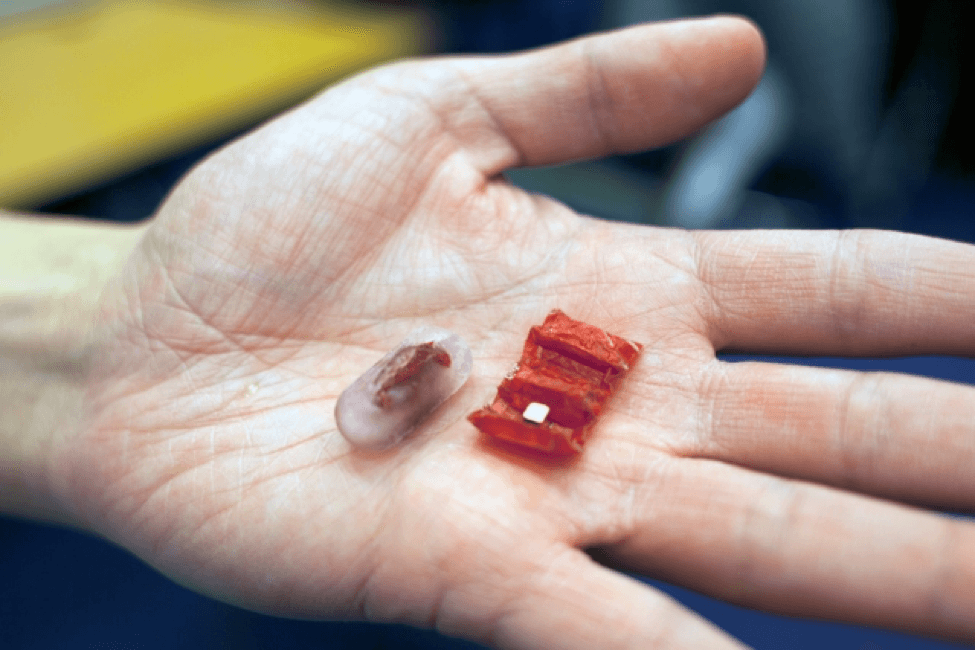Ingestible Magnetic Robot
When you think of robots, you normally imagine a large, metal, clunky object, but in […] The post Ingestible Magnetic Robot appeared first on Argus International.
Photo credit: MIT
This ingestible robot is still in the testing stages, but soon living patients will experience it. The origami-like structure of the robot allows it to be folded up into a pill and swallowed. Once it hits the stomach, it unfolds itself and can maneuver around for its purpose, which may include clearing obstruction or patching up wounds.
The frame of the robot is made from two layers of dried pig intestine with small magnetic components laid inside. The unique slit patterns allow for its origami-like properties of being able to fold and unfold. The tiny robot is also capable of propelling itself using an external magnetic field; then once in the stomach, it sticks to the stomach lining from friction yet can move about freely when the body moves.
Scientists believe there are numerous ways this robot can help patients, such as when children swallow small objects, like coins or batteries, that can be extremely dangerous to their health.
“It’s really exciting to see our small origami robots doing something with potential important applications to health care,” says Rus, who also directs MIT’s Computer Science and Artificial Intelligence Laboratory (CSAIL). “For applications inside the body, we need a small, controllable, untethered robot system. It’s really difficult to control and place a robot inside the body if the robot is attached to a tether.”
As Bradley Nelson, robotics professor at the Swiss Federal Institute of Technology Zurich points out, “This concept is both highly creative and highly practical, and it addresses a clinical need in an elegant way. It is one of the most convincing applications of origami robots that I have seen.”
The post Ingestible Magnetic Robot appeared first on Argus International.





